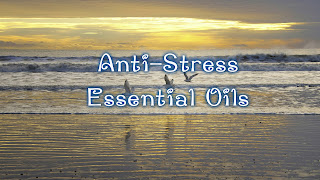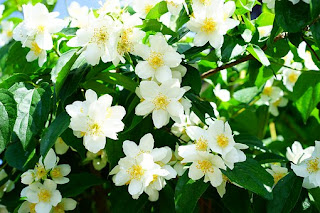 |
| Flower of the Lemon Tree courtesy of Thiagofest at FreeImages.com |
Many years ago when I was more thoroughly immersed in essential oils-- using them daily, maybe over-using them daily, spending a huge sum monthly to keep myself viable as a distributor for an essential oils MLM-- I read V. A. Worwood's "The Complete Book of Essential Oils & Aromatherapy". I was very impressed with her knowledge and the skills that she passed on. When I mentioned this to another, more seasoned eo person she suggested that V.A.W. was not the 'real article'-- that she 'was said' to have plagiarized much of her material. I was shocked. I talked this over with a long-time friend who asked me, in her down-to-earth, no-BS style (for which I love her): "Honestly, Cynthia, do you think that this information hasn't been floating around for decades, maybe hundreds of years? Plagiarize? Come on. Worwood is just smart enough to get out there and share it before some of the pharmaceutical-grade oils guys got hold of it." (If you get my drift).
Valerie Ann Worwood has been a practicing aromatherapist for twenty years, actually plying her arts with 'royalty and heads of state' and other celebrities as her bi-line states. Her homebase is in England where she works out of her own clinic. In research she has a particular interest on aromatherapy and its effects on endometriosis and infertility. She teaches and conducts workshops internationally. She has served on the executive councils of the International Federation of Aromatherapists and the Aromatherapy Organizations Council.
The Fragrant Mind
Part 1: Pathways to the Mind
Part 2: Emotional Healing and Aromatherapy
Part 3: Aroma-Genera: Human Characteristics and Personalities of Essential Oils and
Part 4: Appendices dealing with Safety Data, Therapeutic Components of Essential Oils and Absolutes, Suppliers, Useful Addresses, Notes, Bibliography and Index
What Are Essential Oils?
She goes on to a paragraph of descriptions of how different plants, and plant parts, are distilled or otherwise processed to produce the essential oils. Science, of course, is quite taken with the isolating of various compounds in these essential oils-- the supposed "healing" compounds, etc.
But, if you mix all of a plants isolated compounds together in a pot you will not get the essential oils you were hoping to replicate! I recently read T. Colin Campbell's Whole: Rethinking the Science of Nutrition
When you 'blend' various oils you always get something that is much more than the sum of the two oils' "healing" components... fascinating!
That's a small chunk of chapter 2. I assure you that this book is a mine of gems that will amp your understanding of aromatherapy and essential oils far beyond where you currently are. I will continue to do random chunks of information from this fascinating tome.



















